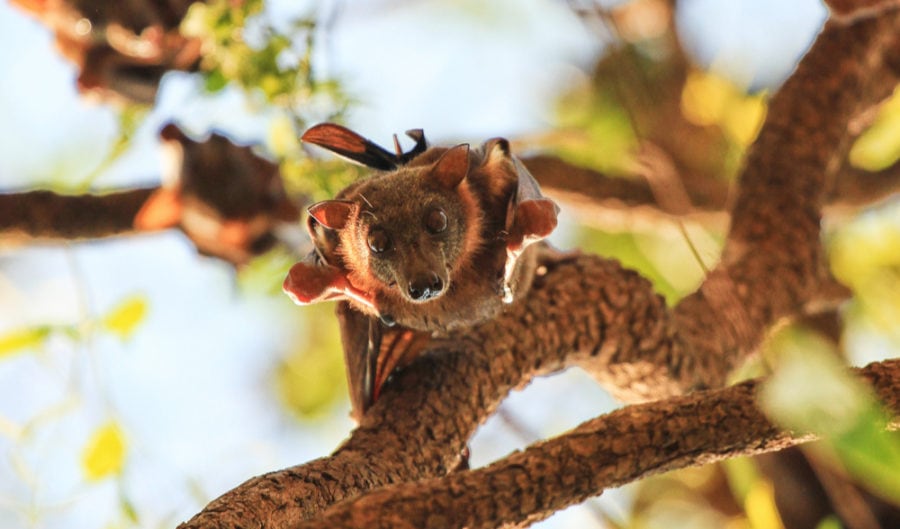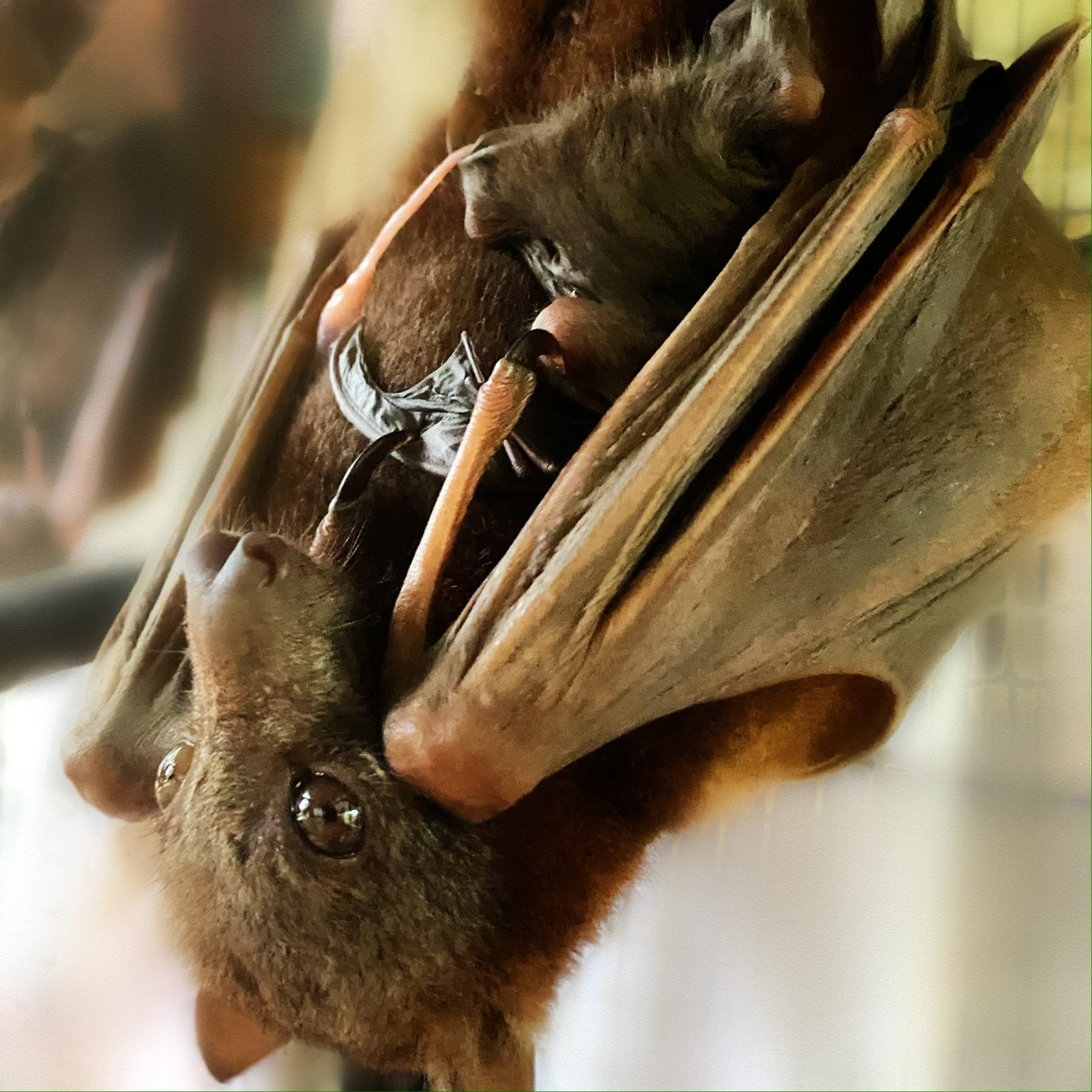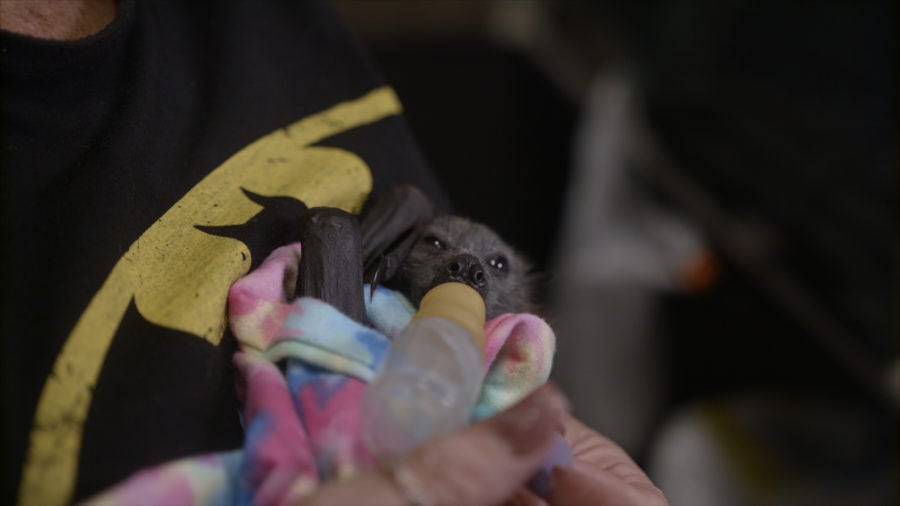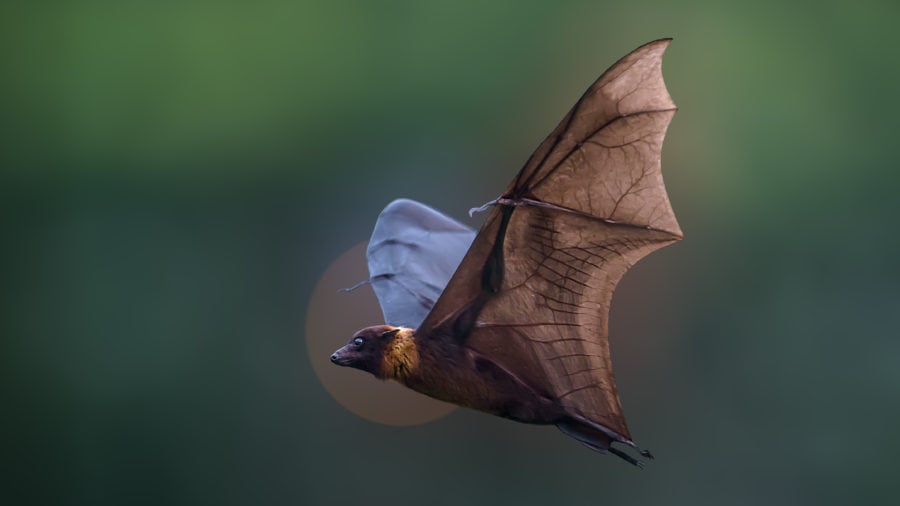This video shows ‘bat midwives’ may exist and it’s amazing

Warning: this video is graphic.
EACH MORNING Queensland bat carer Rebecca Koller does the rounds of her aviaries, which can sometimes house up to 100 bats during rehabilitation.
On one less-than-usual morning, Rebecca came across a bizarre behaviour. “This particular female bat had begun birthing,” says Rebecca. “She had already birthed the pups head and the second female was assisting her through the entire process.”
The video shows a pregnant female little red flying-fox being “assisted” by a fellow female little red flying-fox, who is using her saliva to better lubricate the genital area.
Midwifery among animals isn’t completely unheard off. Monkeys, elephants and dolphins have been known to assist with births. However, evidence of the behaviour in Australian bats is slim.
Bat midwifery was first described in 1994 by respected bat expert Thomas Kunz, who observed similar behaviours in a Rodrigues fruit-eating bat.
The American scientists observed one bat not only lubricating the gential region, but also repositioning the pregnant female to optimise the birth. When the pup finally emerged, the other females assisted in grooming it.
Kunz ultimately concluded that this cooperative behaviour was most likely common in bat colonies.
It’s unknown why a fellow female bat would assist with a birth, however Kunz speculated that it may have something to do with improved social status or better social integration.
“I’ve been privileged enough to see a large number of births in captivity of both spectacled and little red flying-foxes,” Rebecca says, adding that she’s only seen this ‘midwifery’ behaviour four times.
Rebecca says she’d heard of the idea of ‘bat midwives’ and when she first observed the behaviour, she believed it to be consistent with what she saw.
Fellow bat carer Jennefer Mclean, the director of Tolga Bat Rescue and Research says she’s also witnessed this behaviour, but previously put it down to the bats’ curiosity. She adds however, that the behaviour in the video does seem to go beyond curiosity.




